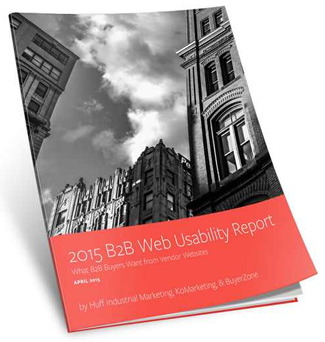|
|
Messaging comprises a position statement and several declarative sentence messages. Typically the details convey a key solution or differentiator no competitor has, and resolves issues and/or problematic areas associated with customers’ product or service offerings.
Most often, creating these messages isn’t a walk in the park, as the PR pro can expect corporate obstacles, roadblocks, and detours along the route to completion.
Some high-tech companies in Silicon Valley wrack their brains coming up with the right messages. Marketing messages and associated positioning or value proposition are indeed the very foundation of a solid technology PR program, but putting them together doesn’t have to take forever. Three to four declarative, active-voice sentences stating a product or service’s strengths as solutions can serve as those marketing messages.
Messaging experts — those who’ve written books and are regarded as the gurus on this subject — say you can expect to take about three weeks to develop an effective set of messages.
However, at startups and smaller B2B companies with only a sales director, company president, and a marketing professional wearing many hats, that message development has the highest probability of being nailed down within a few days.
Messaging can be flexible; it doesn’t have to be rigid. The elasticity comes in when technology changes or when customers require certain technical solutions. Messages embedded in your proactively developed stories and articles going to the trade, vertical, and business press can be adjusted when new customer and sales developments arise.
The inherent beauty of technology from a PR perspective is that it’s dynamic. In B2B communications, customers using hardware and software products from various suppliers face ever-changing issues so that answers to those issues constantly change.
In most instances, that means messaging should be expeditiously developed, minted, and sufficiently flexible to be effective in communicating with a market audience at a given time. Unfortunately, messaging can be worried and argued over so much that a particular set of messages become invalid due to a changing market.
In other words, targeted customers have already satisfactorily resolved their challenges and moved on. Earlier developed messaging thus becomes outdated and moot. It’s a case of being all dressed up and no place to go.
At times, getting messages ironed out can be extremely challenging, particularly in large corporations. There’s where bureaucracy, ineptness, and individual politics thrive. A company environment like this perpetuates the idea of sub-dividing messaging and PR efforts.
In this arrangement, one group is solely tasked with message development. Once those messages are completed, they are thrown over the wall to a second group, typically market communications or PR, who are trusted with conveying them via their selected vehicles. Generally, this isn’t a very effective practice, since news releases are company-centric and not customer-centric. By their nature, news releases do what they’re supposed to do — make announcements and extol new product features — yet they lack the level of credibility messaging requires.
Keep it simple
Tech PR pros have two options: get wrapped up in bureaucratic bickering over what’s right and wrong, causing delays that stymy content development and communications; or take the “Keep it simple, stupid,” approach, preserve basic development and execution with an urgency at the forefront, and hope the marketing group responsible for messaging reaches an expeditious consensus.
 Keep in mind the adage that nothing is perfect. A good rule of thumb is to go with the best messaging possible that support marketing and sales for a certain period, then fall back and re-group to refresh those messages with new customer and sales input. Engaging with a company’s sales force is perhaps the best route to take for messaging. Sales personnel are on the front line with customers and have first hand knowledge of their challenges, issues, and problems, today and in the future; sales personnel provide fertile ground to begin an audit leading to well-developed messaging.
Keep in mind the adage that nothing is perfect. A good rule of thumb is to go with the best messaging possible that support marketing and sales for a certain period, then fall back and re-group to refresh those messages with new customer and sales input. Engaging with a company’s sales force is perhaps the best route to take for messaging. Sales personnel are on the front line with customers and have first hand knowledge of their challenges, issues, and problems, today and in the future; sales personnel provide fertile ground to begin an audit leading to well-developed messaging.
It’s also an excellent way to simultaneously gather critical data for messaging and a contributed article program. That data can be curated into a content database and parlayed into an on-going contributed article program to build awareness, visibility, product preference, business value, and pave the way toward a more favorable sales environment.
It’s worth noting messaging and contributed article content is very similar. Messaging deals with customer issues and solutions. Likewise, the types of contributed articles trade press editors seek are problem/solution or tutorial. What could be better?
Embed messages in PR tools
Once an acceptable set of messages is formulated, it’s time to structure a PR communications program with those messages embedded in some form in all communications tools — press releases, customer case studies, white papers, contributed articles, web content, technical conference papers, you name it, those messages must be there.
 In most instances — with contributed articles, white papers, or other customer-centric PR tools -— messaging needs to be obliquely phrased or worded so that it is editorially acceptable. Embedding company messaging as originally worded and head-on is not suggested in cases like this. However, message wording can be more forgiving, more promotional in company-centric communications, such as online or print advertising and web product or service-related content.
In most instances — with contributed articles, white papers, or other customer-centric PR tools -— messaging needs to be obliquely phrased or worded so that it is editorially acceptable. Embedding company messaging as originally worded and head-on is not suggested in cases like this. However, message wording can be more forgiving, more promotional in company-centric communications, such as online or print advertising and web product or service-related content.
In the last year or so, research studies show that such PR tools as contributed articles, e-newsletters, case studies, visual aids or information graphics are the so-called “goldilocks” of content marketing, according to Ascend2’s April “Content Marketing Trends Survey.”
Kevin Bailey’s article in the April 2014 edition of O’Dwyer’s, “Why PR Is Now SEO’s Best Friend,” best explains the why and how industry media links provide “strong calls to action.” Bailey contends those links drive an audience from a media outlet to relevant content assets on a client’s site. Trade publications usually include the company’s website with the bio of a contributed article author.
This and other research and editorial reports put teeth in the belief there’s considerable value associated with a strategically structured contributed articles program, as the focal point of a strong PR and content marketing program. Contributed articles become the key communications driver to help usher in high-value sales leads and move prospects up the sales cycle. They create and foster credibility, reputation, customer trust, and business value as the key sales incentives in dealing with those B2B high-tech companies.
Once articles are published, they can be posted on your company’s website. Plus, thanks to search engines like Google, Bing, and others, your contributed pieces go viral and are easily located when prospects or existing customers do an online search to find ways of resolving their current challenges.
Further, the content drawn from Subject Matter Expert sourcing sessions can be re-purposed into a variety of other PR tools to include web content, white papers, and other marketing collateral.
Along this line, another research report, KoMarketing’s “2015 B2B Usability Report,” says that traditional marketing collateral like research reports, case studies, and white papers are “must haves” for website posting. It asserts that website content like this helps to establish customer credibility and trust and encourages prospects into a buying frame of mind.
* * *
Dan Garza is a marketing PR professional and veteran observer of Silicon Valley PR. He’s collaborated with top technology companies and was instrumental in creating and implementing successful PR strategies at these firms.



 Laura Anderson, who rose to VP/GM of global communications and events in a nearly 20 year stint at Intel, will take on the Americas technology chair at Burson following the completion of the BCW and H+K merger on July 1.
Laura Anderson, who rose to VP/GM of global communications and events in a nearly 20 year stint at Intel, will take on the Americas technology chair at Burson following the completion of the BCW and H+K merger on July 1. WE Communications has partnered with ROKK Solutions to form the WE ROKK AI service.
WE Communications has partnered with ROKK Solutions to form the WE ROKK AI service. In the dynamic world of modern business, effective communication is a pivotal tool for success across various industries. At Communications Strategy Group (CSG®), our expertise in embracing innovation in communication extends beyond traditional marketing strategies, paving the way for transformative industry-specific solutions.
In the dynamic world of modern business, effective communication is a pivotal tool for success across various industries. At Communications Strategy Group (CSG®), our expertise in embracing innovation in communication extends beyond traditional marketing strategies, paving the way for transformative industry-specific solutions. There are two types of tech PR professionals. Which one are you? And are C-suite executives making that decision for you?
There are two types of tech PR professionals. Which one are you? And are C-suite executives making that decision for you? While there’s an impulse to grab reporters’ attention with the newest industry-transforming tech product or service, a back-to-basics approach focused on telling the right stories to the right people is a far more successful way to ensure your technology campaign breaks through the clutter of today’s crowded tech landscape.
While there’s an impulse to grab reporters’ attention with the newest industry-transforming tech product or service, a back-to-basics approach focused on telling the right stories to the right people is a far more successful way to ensure your technology campaign breaks through the clutter of today’s crowded tech landscape.


 Have a comment? Send it to
Have a comment? Send it to 
No comments have been submitted for this story yet.